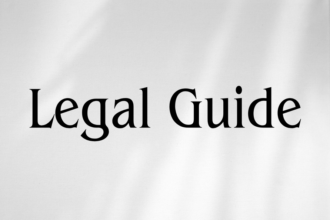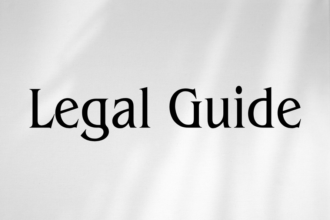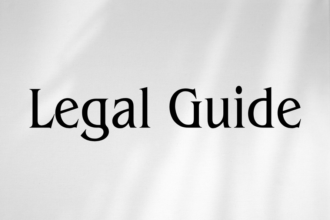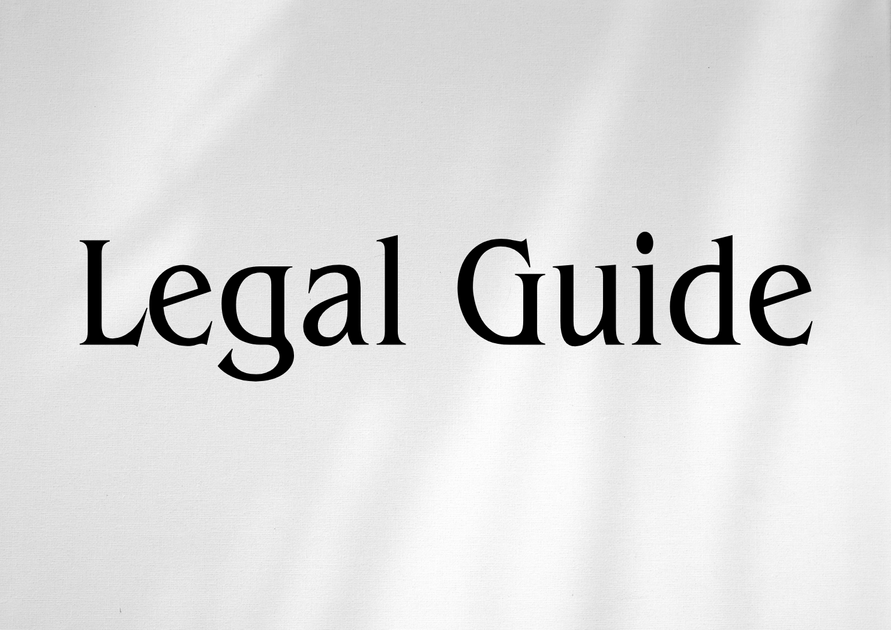Introduction: Understanding Sukuk Regulation in Saudi Arabia
The rise of Sukuk — Islamic financial certificates frequently referred to as Islamic bonds — has revolutionised Islamic finance across the GCC and global markets. The regulatory and legal framework surrounding Sukuk in Saudi Arabia is not only a subject of academic interest, but a matter of strategic significance for UAE-based businesses, investors, and legal practitioners. Recent legislative developments in Saudi Arabia, coupled with the UAE’s own ambitions to strengthen its financial markets in line with UAE Vision 2025, highlight the necessity for robust legal insight into cross-border Sukuk transactions and compliance. This article offers an authoritative, consultancy-grade analysis of Sukuk regulation in Saudi Arabia, how it interfaces with UAE law, and why strategic compliance should be a priority for businesses, executives, HR managers, and legal professionals engaged in cross-border finance and investment.
In an era where the regulatory landscape is shifting rapidly, understanding the nuances of Islamic capital market instruments is essential. With the Saudi Capital Market Authority (CMA) implementing continuous reforms and global investors seeking Shariah-compliant investment options, UAE entities engaging with Saudi Sukuk must align their practices with both the letter and spirit of the law. This legal briefing demystifies the latest updates, risk areas, and practical compliance strategies for effective Sukuk participation.
Table of Contents
- Overview of Sukuk and Regulatory Framework in Saudi Arabia
- Key Laws, Regulations, and Authorities
- Process and Structure of Sukuk Issuance in Saudi Arabia
- Legal Provisions: Analysis and Practical Implications
- Risks of Non-Compliance and Penalties
- Comparative Insight: Saudi vs UAE Sukuk Regulation
- Case Studies and Hypothetical Examples
- Compliance Strategies and Practical Recommendations
- Conclusion: Future Trends and Preparing for Compliance
Overview of Sukuk and Regulatory Framework in Saudi Arabia
What are Sukuk?
Sukuk are Shariah-compliant financial instruments, representing undivided ownership in tangible assets, usufructs, or services. Unlike traditional bonds, Sukuk do not pay interest, but instead entitle holders to a share in underlying assets’ profits — thereby complying with the prohibition of riba (interest) under Islamic law. Sukuk have become central to the GCC capital markets, particularly as governments and private entities look for alternative financing mechanisms aligned with Islamic principles.
Saudi Arabia’s Sukuk Market: The Context
In recent years, Saudi Arabia has emerged as a global leader in Sukuk issuance, with offerings from both the public sector (notably via the Ministry of Finance) and the private sector. Legislation and regulatory oversight are designed to ensure Shariah compliance, financial stability, and investor protection — all while encouraging market development. This complexity demands a nuanced understanding of the legal instruments, regulatory authorities, and cross-border implications, especially for UAE investors or originators.
Key Laws, Regulations, and Authorities
Regulatory Bodies
- Capital Market Authority (CMA): The primary authority for regulating Sukuk and debt instruments in Saudi Arabia, empowered by the Capital Market Law (Royal Decree No. M/30 dated 2/6/1424H).
- Saudi Arabian Monetary Authority (SAMA): Supervises financial stability and monetary policy, with indirect influence over Sukuk market operations.
- Shariah Supervisory Committees: Responsible for ensuring each Sukuk structure adheres to Islamic law.
Key Regulations
- Capital Market Law (CML) (Royal Decree No. M/30): Provides the legal basis for securities, including Sukuk, and establishes the CMA.
- Offers of Securities Regulations (OSR, amended 2021): Details disclosure, offer methods, and investor protection obligations for Sukuk issuance.
- Corporate Governance Regulations: Set out governance requirements for joint stock companies, impacting Sukuk issuances by listed companies.
- Shariah Governance Principles: As per CMA and SAMA guidelines, require explicit Shariah supervisory involvement in Sukuk structuring.
Notable Updates and Official References
- 2021 OSR amendments streamlined private placements and introduced electronic offering notice procedures (Source: CMA official website).
- Recent alignment with the International Organization of Securities Commissions (IOSCO) standards to enhance transparency and investor protection.
- Royal Decree No. (M/30) and associated Executive Regulations — the backbone of Saudi securities law.
Process and Structure of Sukuk Issuance in Saudi Arabia
The conventional Sukuk issuance process in Saudi Arabia revolves around key milestones, each with distinct legal and procedural requirements. Understanding these steps empowers UAE-based issuers, arrangers, and investors to ensure smooth, compliant cross-border participation.
Step-by-Step Sukuk Issuance Process
- Pre-Approval and Structuring:
- Engagement with legal, Shariah, and financial advisors.
- Identification of underlying assets; Shariah vetting.
- Obtaining CMA Approval:
- Submission of prospectus and compliance documents (per OSR and CML requirements).
- Shariah compliance report appended as mandatory exhibit.
- Offering to Investors:
- Public offering or private placement in accordance with disclosure requirements.
- Electronic distribution of offering documents pursuant to 2021 OSR reforms.
- Listing and Post-Issuance Compliance:
- Registration with the Saudi Stock Exchange (Tadawul) if listed.
- Ongoing compliance with reporting, disclosure, and Shariah monitoring.
Suggested Visual: Process flow diagram illustrating the Sukuk issuance lifecycle: Structuring & Shariah vetting → CMA approval → Offering → Listing & compliance.
Legal Structures Used in Sukuk
Common legal structures for Sukuk issuance in Saudi Arabia include:
- Sukuk Al-Ijara (lease-based structure)
- Sukuk Al-Murabaha (cost-plus sale structure – though sometimes scrutinised for secondary market trading)
- Sukuk Al-Mudaraba (partnership/profit-sharing arrangement)
Each structure must have comprehensive, Shariah-endorsed documentation, and legal due diligence is critical at every phase.
Legal Provisions: Analysis and Practical Implications
Key Legal Provisions and Requirements
- Disclosure: Full and transparent disclosure in prospectuses, aligned with the OSR and CML. UAE issuers participating in Saudi Sukuk must also reconcile UAE prospectus rules under SCA Board of Directors’ Resolution No. 13 of 2021.
- Shariah Validation: All Sukuk must be pre-approved by a qualified Shariah Supervisory Board; documentation must reflect compliance.
- Asset Backing: Sukuk structures cannot be based on prohibited (haram) assets or activities as per Islamic law.
- Ongoing Reporting: Ongoing periodic disclosure to the CMA and to investors post-issuance.
Practical Insights for UAE-Based Stakeholders
- Cross-Jurisdictional Coordination: UAE entities must reconcile Saudi requirements with UAE security, listing, and Shariah standards.
- Board Approvals: Adequate internal authorizations and audit trails are essential; consider board resolutions that explicitly reference both jurisdictions.
- Documentation Language: While Arabic is generally required in Saudi legal filings, English legal opinions and dual-language documents are increasingly industry standard for cross-border deals.
Risks of Non-Compliance and Penalties
Legal and Regulatory Risks
- Failure to Disclose: Misleading, incomplete, or omitted disclosures may result in administrative penalties, investor lawsuits, and possible criminal sanctions (per Articles 55-60 CML).
- Shariah Non-Compliance: Invalidation of the Sukuk, investor claims for compensation, reputational damage.
- Improper Marketing: Offering Sukuk to the public without a CMA-approved prospectus is unlawful (as per OSR Article 6).
- Failure to Report: Late or missing periodic filings attract fines and may trigger suspension or delisting on Tadawul.
Suggested Table: Penalty Comparison (Old vs New Rules)
| Issue | OSR & CML (pre-2021) | OSR Amendments (2021+) |
|---|---|---|
| Non-Disclosure | Administrative fines up to SAR 100,000 | Increased fines, mandatory rectification notices, potential suspension |
| Shariah Non-Compliance | Issuer liability, revocation risk | Broader recourse for investors, enhanced investor protection mechanisms |
| Improper Marketing | Warning, fines | Stricter sanctions, public blacklisting |
Compliance Checklist for UAE Firms
- Confirm dual Shariah compliance (UAE and Saudi)
- Engage experienced cross-jurisdictional legal counsel
- Ensure robust internal governance and document retention
- Coordinate periodic reporting schedules for both regulators
Comparative Insight: Saudi vs UAE Sukuk Regulation
While Saudi Arabia and the UAE both maintain sophisticated Sukuk regulatory regimes, important differences exist in how each framework operates. For businesses seeking cross-listings, dual issuances, or cross-border investment, these distinctions must be carefully navigated.
Comparison Table: Saudi Arabia vs UAE Sukuk Regulation
| Aspect | Saudi Arabia | UAE (as of Federal Law No. 4 of 2000 & Cabinet Resolution No. 9 of 2023) |
|---|---|---|
| Regulator | CMA | Securities and Commodities Authority (SCA) |
| Listing Venue | Tadawul, private placements | ADX, DFM, NASDAQ Dubai |
| Language of Documents | Arabic mandatory, with recognised bilingual filings | Arabic or English accepted, translations required for official records |
| Shariah Compliance Supervision | Issuer-appointed Shariah committee, periodic CMA review | Central Shariah Board (since SCA Resolution 2020), ongoing SCA review |
| Public Offer Approval | Mandatory CMA prospectus approval | Mandatory SCA prospectus approval, with fast-track option (2023 updates) |
Case Studies and Hypothetical Examples
Case Study 1: UAE Corporate Issuer Entering Saudi Sukuk Market
ABC Holdings, a UAE-based conglomerate, seeks to issue a SAR-denominated Sukuk listed on Tadawul and cross-listed on ADX. Key legal steps include securing dual Shariah endorsements, preparing bilingual prospectuses, and appointing a lead manager licensed in both markets. Failure to comply with updated OSR requirements could delay listings and expose ABC to fines or investor action.
Case Study 2: Compliance Breakdown and Regulatory Response
DEF Energy, a Saudi company, omits full asset disclosure in its public offering documents. Following an investor notice, the CMA imposes a rectification order under the 2021 OSR amendments, halts trading, and undertakes an investigation. The cost to DEF: reputational damage, a SAR 200,000 fine, and increased investor scrutiny — illustrating the business-critical impact of robust compliance procedures.
Compliance Strategies and Practical Recommendations
Best Practices for UAE Entities
- Early Engagement: Engage Shariah advisors, legal counsel, and auditors right from the structuring phase.
- Bilingual Documentation: Prepare dual-language prospectuses and contracts to facilitate regulatory review and cross-border investor trust.
- Periodic Training: Train compliance and finance teams on Saudi and UAE regulatory changes, particularly annual updates and circulars.
- Internal Audits: Conduct regular audits of governance and compliance procedures, focusing on document retention and timely disclosure.
Suggested Visual: Compliance checklist for Sukuk issuers, tailored to cross-border issuance requirements.
Professional Recommendations
- Firms should monitor CMA and SCA bulletins for ongoing regulatory adjustments.
- Where complex structures or novel assets are involved, seek advance non-binding consultations with both regulators.
- Consider insurance or indemnity provisions in issuance documentation to mitigate certain legal risks.
Conclusion: Future Trends and Preparing for Compliance
The Saudi Sukuk regulatory landscape is evolving in tandem with the Kingdom’s Vision 2030 strategy and ongoing capital market reforms. For UAE investors and issuers, this translates into both growing opportunity and intricate compliance demands. With both UAE and Saudi regulators committed to transparency, investor protection, and global best practices, the cross-border Sukuk market will only become more sophisticated.
Key Takeaways:
- Sukuk regulation in Saudi Arabia is robust, investor-focused, and subject to continual enhancement.
- Significant opportunities exist for UAE entities, provided comprehensive dual-jurisdictional compliance is maintained.
- Regular monitoring of legal updates from both the UAE Ministry of Justice and Saudi CMA is essential.
- Firms must prioritise governance, documentation, and proactive communication to reduce risk exposure and enhance market reputation.
Looking ahead, closer regulatory alignment across the GCC is expected. UAE businesses and investors are advised to build agile compliance frameworks, invest in cross-border legal expertise, and leverage technology for ongoing monitoring. Staying ahead of regulatory change is not just a compliance matter — it’s a strategic differentiator for the Islamic capital market leaders of tomorrow.




